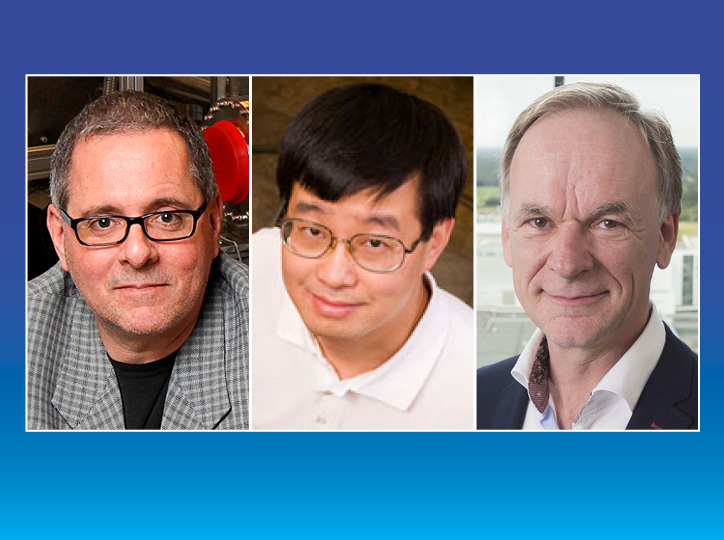OSA High-brightness Sources and Light-driven Interactions Congress: Innovations in Ultrafast Science
Suzanne Ffolkes, OSA Chief Communications Officer
Comprised of three topical meetings, the all-virtual 2020 OSA High-brightness Sources and Light-driven Interactions Congress showcased applications in environmental measurements, consumer technologies and ultrafast science. The event, held 16 – 20 November, focused on Compact (EUV & X-ray) Light Sources, High-Intensity Lasers and High-Field Phenomena and Mid-Infrared Coherent Sources.
“The congress exceeded our expectations in attracting a global audience interested in learning how applications in this field have advanced,” said Lahsen Assoufid, Co-Chair of OSA High-brightness Sources and Light-driven Interactions Congress. “The speakers and presenters shared compelling content that broadened our knowledge of where these technologies are having a significant impact.”

Caption: 2020 OSA High-brightness Congress Plenary Speakers: (from left to right) Louis DiMauro, Jun Ye, and Jos Benschop
The session on New Sources and Techniques for Mid-IR Spectroscopy II featured notable presentations on new techniques and instruments for trace gas detection. In her talk titled “Mid-Infrared Comb-Based Fourier Transform Spectroscopy,” Aleksandra Foltynowicz of Umea University, Sweden, described how combining frequency combs improves trace gas detection. This technique, she said, produces a much higher level of detail and allows detection in very small sample volumes.
Lukas Emmenegger with EMPA, Swiss Federal Laboratories for Materials Science and Technology, presented results of a study on quantum cascade laser spectrometers for mobile trace-gas sensing. This approach has led to many interesting applications including development of an instrument placed on a tram in Zurich, Switzerland to measure nitrogen dioxide. The technology is also used to measure methane emissions from oil and gas fields in Hungary. The emissions are about four grams of methane per second. In comparison, Emmenegger said the methane from a single gas well is equivalent to methane emitted by about 1,300 Swiss cows. Recent developments with mid-IR absorption spectroscopy has led to game-changing and mobile applications in the environmental field, he added.
Renowned speakers in their area of expertise were the plenary headliners. Louis DiMauro, Professor of Physics and Hagenlocker Chair at the Ohio State University, USA, explained how studies of wavelength scaling are driving a renewed interest in potential applications in attosecond and imaging science. Focusing on the semi-classical view of strong field atomic physics and implications of scaling, DiMauro noted that intense mid-infrared interactions have opened new opportunities in science. Jun Ye, Fellow, University of Colorado at Boulder JILA, USA, described technical approaches on producing the brightest sources for frequency combs and their applications for novel spectroscopy.
Jos Benschop, Senior Vice President Technology at ASML, Netherlands, shared how Extreme Ultraviolet (EUV) Lithography has entered high volume manufacturing with chips for supercomputers, laptops and commercially available smartphones. With data volume exploding, Benschop remarked “society’s hunger for chips remain unstilled and major trends in semiconductor-enabled computing drive long term demand.” The world will generate more than 175 zettabytes per year by 2025, he predicted, adding that one zettabyte of data equals 200 million years of binge-watching Netflix.
The congress drew more than 1,260 registrants from 58 countries. Recordings of the sessions will be available for registrants for 60 days.
